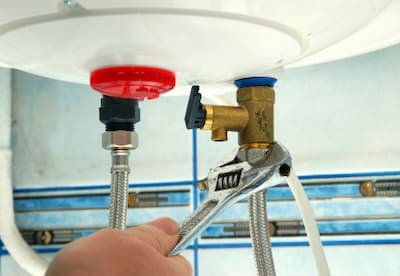Useful Techniques for Caring for Your Home's Hot Water SystemBest Ways to Maintain Your Home's Hot Water System Successfully
Schedule Service NowOn this page on the next paragraphs you can locate a good deal of good additional info related to What Kind of Maintenance Do Water Heaters Need?.

Warm water is important for daily convenience, whether it's for a revitalizing shower or cleaning dishes. To guarantee your warm water system runs effectively and lasts much longer, regular maintenance is crucial. This article offers sensible suggestions and understandings on how to keep your home's warm water system to stay clear of disruptions and pricey fixings.
Introduction
Preserving your home's warm water system might seem daunting, but with a few straightforward actions, you can ensure it operates efficiently for several years to come. This guide covers every little thing from recognizing your warm water system to DIY upkeep pointers and recognizing when to hire expert aid.
Value of Maintaining Your Hot Water System
Regular upkeep not just prolongs the life-span of your warm water system but also guarantees it runs effectively. Disregarding upkeep can bring about decreased effectiveness, higher power costs, and also early failing of the system.
Signs Your Hot Water System Requirements Maintenance
Understanding when your warm water system requires focus can prevent major problems. Watch out for indications such as irregular water temperature level, weird sounds from the heater, or rusty water.
Flushing the Hot Water Heater
Flushing your water heater eliminates debris accumulation, enhancing effectiveness and lengthening its life.
Monitoring and Changing Anode Rods
Anode rods avoid rust inside the tank. Inspecting and replacing them when worn is vital.
Complicated Problems Needing Expert Aid
Instances consist of significant leakages, electrical issues, or if your water heater is consistently underperforming.
Regular Specialist Maintenance Benefits
Professional upkeep can consist of comprehensive assessments, tune-ups, and making certain conformity with safety and security standards.
Evaluating and Readjusting Temperature Level Setups
Adjusting the temperature level setups ensures optimal performance and security.
DIY Tips for Maintenance
You can carry out a number of maintenance tasks yourself to keep your hot water system in top condition.
Looking for Leakages
Regularly evaluate pipelines and links for leakages, as these can cause water damages and greater expenses.
Understanding Your Hot Water System
Before diving into upkeep tasks, it's useful to understand the standard parts of your warm water system. Usually, this includes the water heater itself, pipelines, anode rods, and temperature level controls.
Regular Monthly Maintenance Tasks
Normal monthly checks can aid catch minor concerns before they escalate.
Examining Pressure Alleviation Valves
Evaluating the stress relief valve ensures it functions appropriately and prevents excessive stress accumulation.
Shielding Pipelines
Insulating warm water pipes lowers warm loss and can conserve energy.
When to Call a Specialist
While DIY upkeep is advantageous, some problems require specialist competence.
Conclusion
Routine upkeep of your home's hot water system is necessary for effectiveness, long life, and expense financial savings. By complying with these tips and knowing when to look for professional assistance, you can make certain a reliable supply of warm water without unexpected disturbances.
How to Maintain an Instant Hot Water Heater
Before tinkering with your hot water heater, make sure that it’s not powered on. You also have to turn off the main circuit breaker and shut off the main gas line to prevent accidents. Also turn off the water valves connected to your unit to prevent water from flowing into and out of the appliance. 2. When you’re done, you have to detach the purge valves’ caps. These look like the letter “T” and are situated on either side of the water valves. Doing so will release any pressure that has accumulated inside the valves while at the same time avoid hot water from shooting out and burning your skin. 3. When the purge valves’ caps are removed, you have to connect your hosing lines to the valves. Your unit should have come with three hoses but if it didn’t, you can purchase these things from any hardware or home repair shops. You can also get them from retail stores that sell water heating systems. Read the user’s manual and follow it to complete this task properly. When the hosing lines are connected, open the purge port’s valves. 4. You should never use harsh chemical cleaners or solutions when cleaning your unit. Make use of white vinegar instead. It should be undiluted and you’ll probably use about 2 gallons. 5. Now flush your water heater. This task should probably take about 40 minutes. We can’t give you specific directions for this because the procedure is carried out depending on the type, model and brand of your heater. With that being said, refer to the user’s manual. 6. When you’re done draining the unit, you have to turn off the purge port valves again. Remove the hosing lines that you earlier installed on each of the water valves. Put the valve caps (purge port) back in their respective places and be very careful so as not to damage the rubber discs that are found inside these caps. 7. Now that everything’s back in place, check your user’s manual again to find out how to reactivate your water heating system. 8. Once it is working, turn one of your hot water faucets on just to let air pass through the heater’s water supply pipes. Leave the tap on until water flows smoothly out of it. https://www.orrplumbing.com/blog/2014/september/how-to-maintain-an-instant-hot-water-heater/

I found that page on Tips on Maintaining a Water Heater when doing a lookup on the web. Sharing is caring. You won't know, you may just be helping someone out. We appreciate your readership.
Call Today